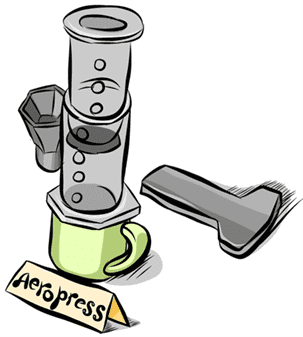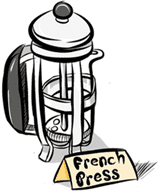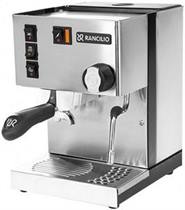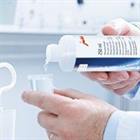Intro
While we do not prescribe a particular brew to anyone, since we promote the we thought we would give some guidance to how we feel you can start brewing the coffee.
The water to use in the brew is assumed to be filtered tap water. To accentuate the fruit, you can experiment with augmenting the water with Mg+. We have a post on how to do this read: Tweaking water for coffee with Mg…
If you are keen to read the info sheet for the coffee it is available here: Vitaliano Merino Info Sheet.
Coffee Age
As roasted coffee leaves the roaster the CO2 levels start to decrease. Typically 2 days after roasting it is estimated that about 50% of what was in the bean has now dissipated.
While some people prefer to age their coffee. Getting rid of excess CO2 is as easy as grinding 40-60 seconds before adding water to the coffee. Typically, after 4 days is when we notice the very volatile acids (that appear on the right-hand side of the taster’s wheel) start fading. For those that like bright fruity complexity, try drink this coffee within the first week. If you prefer a more rounded mouth feel then wait 6 days for the fruity acidity to decrease. You can also change your ratio of brew to suit your taste. All coffees change over time. And until they are totally dull will just be different.
Pour over
For Chemex, V60, Kalita and other pour over brews this is our recommended starting brew.
- Brew ratio 1:15 – for a bodied (but no too bodied) coffee. Or 1:17 for a tea like body.
- First pour 2.5-3x the weight of the coffee – wait until 45 seconds
- Second pour up to 40% of total pour in dose. Wait 45-60 seconds, the longer you wait the sweeter the coffee.
- Final pours depend on how much body/mouthfeel you want. We recommend 3 pours of equal ratio (so 20% each of final water pour dose in).
- Total brew time for V60/Lalita between 3 and 4 mins and Chemex between 4 and 5 mins (if longer means grind too fine, shorter to course).
Example for V60

- 20g coffee ground fresh – if coffee is younger than 3 days then grind 25-30 seconds before dosing.
- First pour water dose in is 55g – take about 12-16 seconds to pour. Wait until time elapsed is 45 seconds.
- Second pour water dose in an extra 70g – total will be 120g (15-20 seconds pour time). Wait for total time to be 2:00.
- Repeat pour additional 60g in 15 sec, wait 15 sec. Until total water in is 300g.
This method above is based on the 4:6 method discussed on in the Quaffee posts.
AeroPress
 While most people with beards and tattoos swear by the inverted method, we have never been a fan. So, if you are then perhaps this method is not for you. Our method is:
While most people with beards and tattoos swear by the inverted method, we have never been a fan. So, if you are then perhaps this method is not for you. Our method is:
- 15g of coffee into the AeroPress using the classic method.
- Add 100g water (82C is best) to the AeroPress stir 3 times. Wait 30 seconds.
- Add another 100g of water to the AeroPress. Add plunger to top of AeroPress
- Wait for total contact time to be 2 minutes.
- Gently plunge the coffee plunger taking around 15-20 seconds to plunge down.
Once the coffee is 2 weeks old you may need to increase the coffee dose to 17g.
French Press
We used our default method here and it worked well.
- Add 48g of coffee to the plunger/French press.
- Add 800g of water to the press, stir three times.
- Wait 4 minutes.
- Skim the floating coffee off the top of the brew with a spoon.
- Gently add Plunger to press, and gently press down, so plunger is just above coffee.
Espresso
A suggested recipe for Espresso is always hard. Many factors determine a recommendation, to name a few:
- The espresso machine used, and how it is setup for temperature, pressure and flow rate.
- The type of grinder used. The fines:boulders ratio it produces.
- The espresso basket used, is it pressurized, laser cut, calibrated to a particular dose.
Add to this that we all have different tastes of how we like our espresso, some love intense fruit, others mouth feel is king. If you remember the basics that a course grind produces more acidity and a finer grind dials in sweetness until bitterness dominates then this will help in your calibration.
We assume you have a good idea house dose, yield and time link; if not check this post out on BH: Espresso Recipes.
Our Espresso
While we have not had the luxury to let the coffee rest for more than 4 days, we have been playing with a relatively fresh roast. We have played with the coffee on the Vario and Sette grinders in 17 and 18 g IMS and VST baskets. The machines used are a La Marzocco GB5 and the Rancilio Silvia.
With these premises, here are a few guidelines for how we got the best out of the coffee:
- Coffee grind was slightly courser than our Ethiopians and Colombians.
- The ratios that worked be where 1:2.1 (e.g 17g dose 36g yield) and to 1:2.4 (eg 17g dose and 40g yield). This way the fruit like acidity was balanced with the coffee’s sweetness and had a creamy mouth feel.
- Both machines the temperature is set to 91C – but the La Marzocco’s pressure is dialled down to 8 bar, while the Rancilio is standard.
- The espresso on the GB5 was pulled at 22-25 seconds, the Rancilio 24-26seconds.
Other Methods
While we have not brewed on a mocha pot and syphon, if you have post a comment.
Add your recipe?
How did you get the best out of the coffee? Add a comment tell us.


